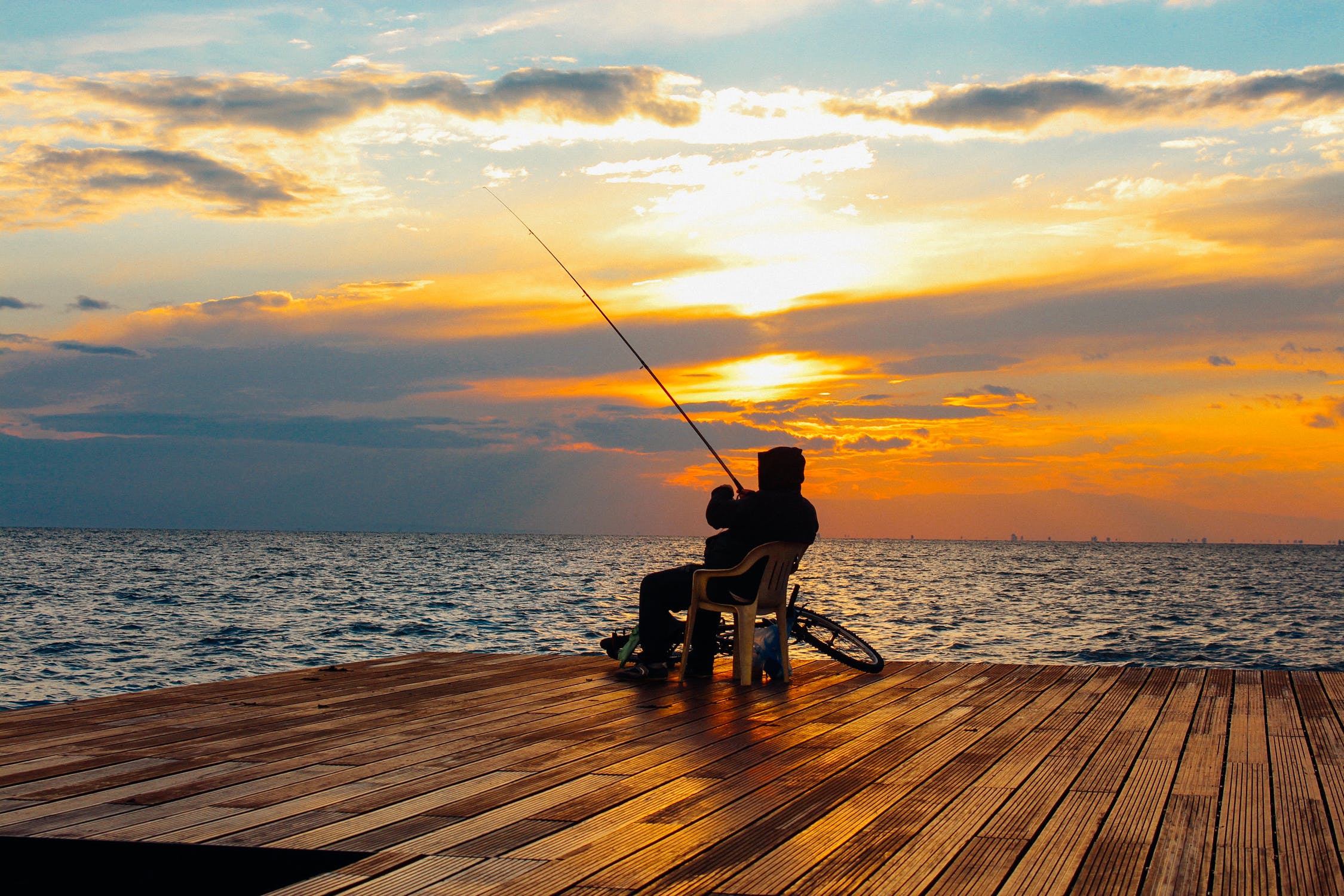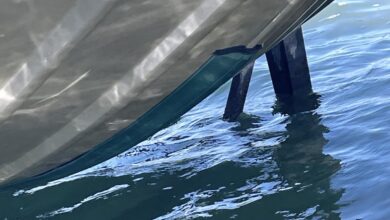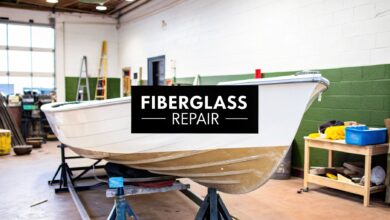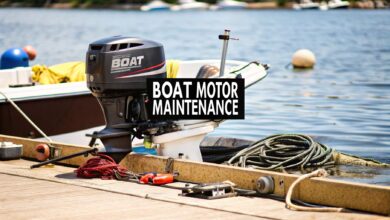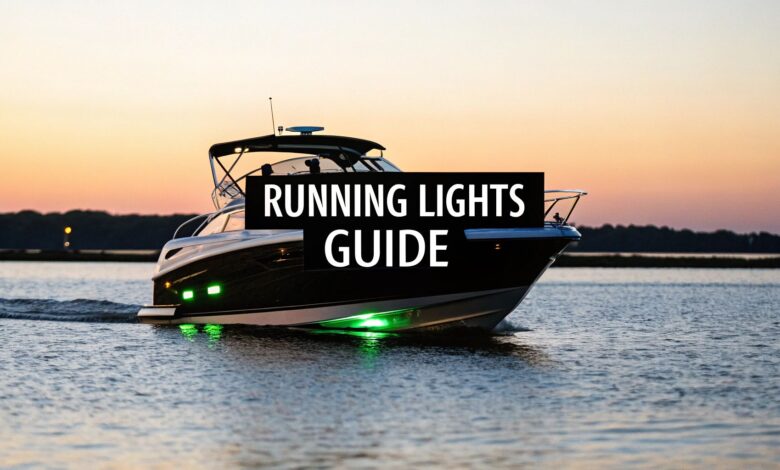
When you're on the water after sunset, your boat's running lights are a critical legal requirement. They are the essential, silent language of the waterways. These lights are a safety system that tells other boaters your size, activity, and direction.
Why Running Lights Are Your Boat's Language
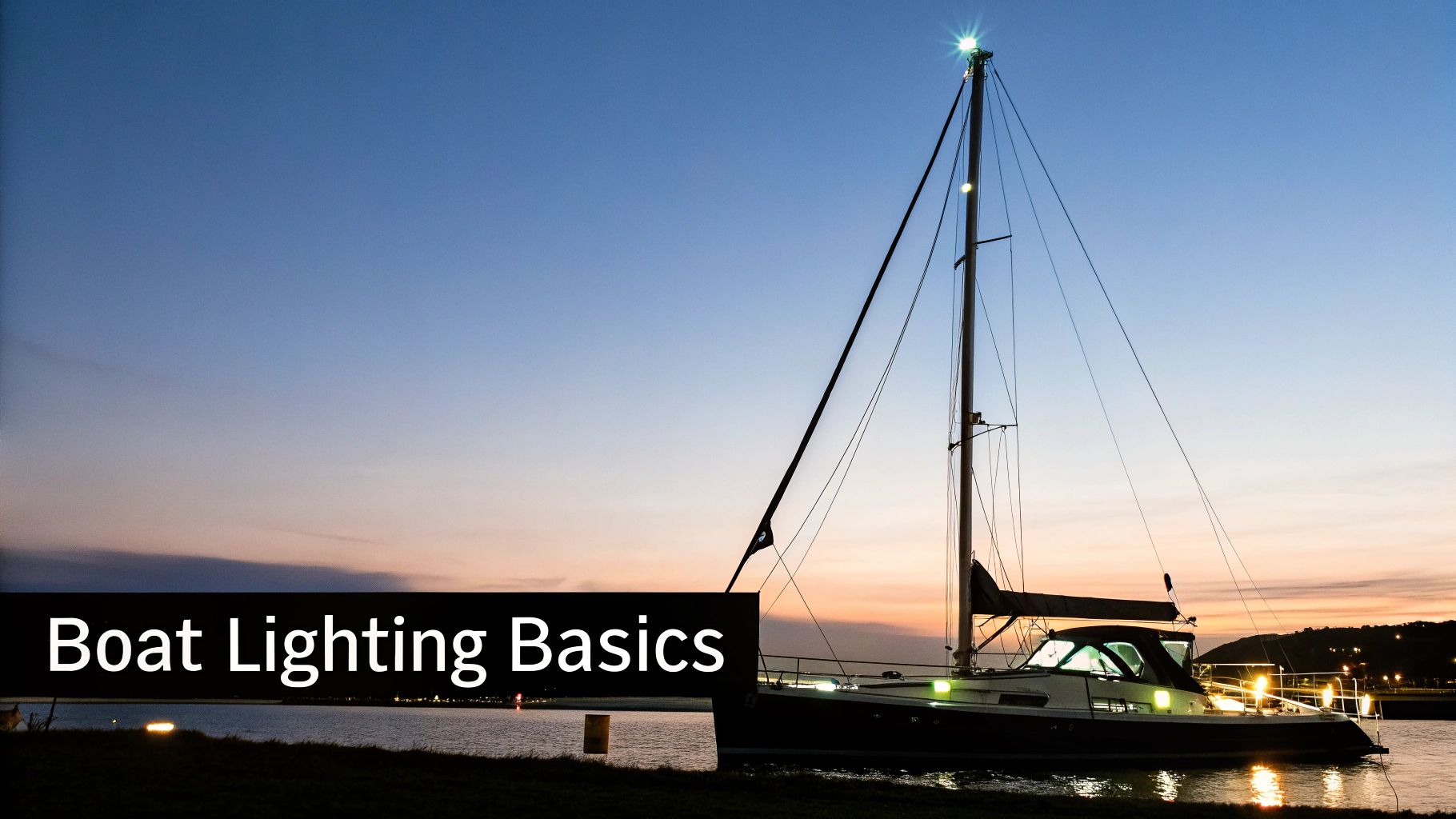
On a pitch-black night, the water can feel vast and empty. The truth is, you’re rarely alone, and other boats can be closer than you think. Running lights are designed to slice through that darkness, giving everyone a universal way to "see" each other.
The Foundation of Boating Safety
Picture two boats heading towards each other in total darkness. Without lights, neither skipper would know the other's position until a collision is seconds away. Your running lights solve this by providing instant visual information.
The most important thing to remember is that running lights aren't primarily there to help you see. They exist to help you be seen. They are mandatory for safe boating from sunset to sunrise and during restricted visibility like fog or rain.
Skipping them or using them incorrectly endangers everyone on the water.
What Your Lights Are Saying
When properly displayed, your running lights communicate key information at a glance. The specific colors and their placement tell a story to anyone who knows the language.
Here's what other boaters can learn from your lights:
- Your direction of travel: Seeing both your red and green lights means they're looking at you head-on.
- Your current status: Light arrangements can signal whether you're underway, anchored, or engaged in a task like fishing.
- Your position relative to them: The lights instantly tell another skipper whether you're on their port (left) or starboard (right) side.
Stick with this guide, and we'll break down what each light means.
How We Got Today's Navigation Light Rules
The rules for running lights on a boat didn’t appear overnight. They evolved during the 19th century as steamships shared the water with sailing vessels. This created new dangers, especially after dark.
Maritime nations realized they needed a common language of light to prevent nighttime collisions.
The First Steps Toward Standardization
This concern led to the first official rules for vessel lighting. A key step was a U.S. act in 1838, mandating that steamboats carry signal lights from sunset to sunrise. These early laws built momentum for a global standard.
These efforts from different countries led to the first International Maritime Conference in Washington D.C. in 1889.
This conference produced the Washington Conference Rules. Adopted internationally by 1897, it was the first standardized set of rules for navigation lights. It laid the groundwork for the system we use today.
The Modern Framework
This foundational work paved the way for modern regulations. Today, the ultimate guide to navigation rules is a set of regulations known as the COLREGS (International Regulations for Preventing Collisions at Sea), adopted in 1972.
This history helps explain why every detail—from colors to light angles—is so important. It’s a system refined over more than a century of experience.
Decoding the Colors and Arcs of Your Lights
Think of your boat's lights as a simple, visual language. Each color and its position tells a vital story to anyone else on the water.
If you spot a green light on another vessel, you're looking at its starboard (right) side. A red light indicates its port (left) side. This simple color code is the foundation for interpreting another boat's movement.
White lights also carry important messages. A single white light usually marks the stern (the back) of a boat. On smaller vessels, an all-around white light might show it's underway.
This image gives you a clear picture of how these lights are arranged on a recreational boat.
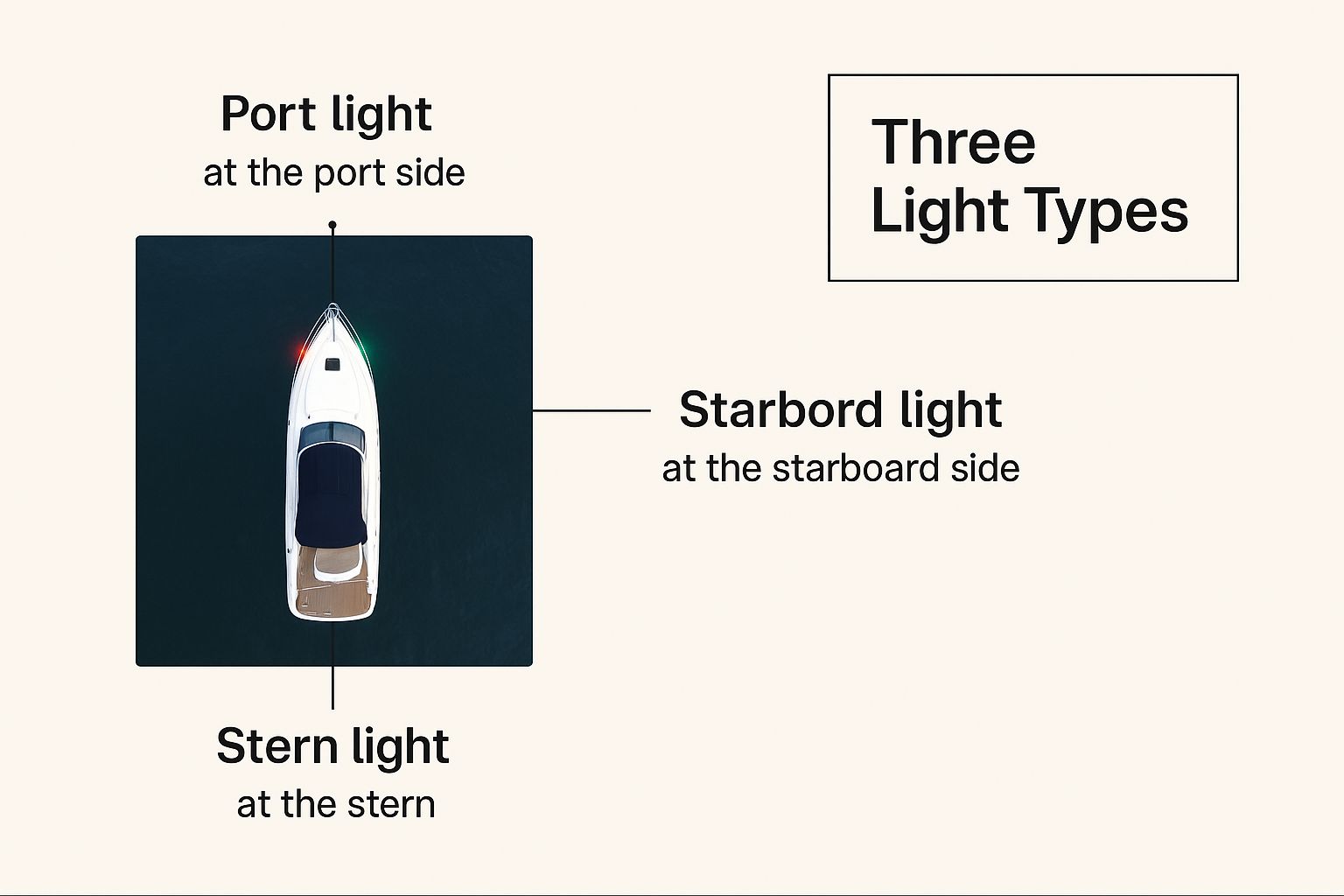
As you can see, the port, starboard, and stern lights each have a specific place. This standard placement makes the whole system work.
Here’s a simple breakdown of what each light means.
Boat Navigation Light Colors and Meanings
| Light Color | Common Location | Arc of Visibility | Meaning |
|---|---|---|---|
| Green | Starboard (Right) Side | 112.5° | Indicates the vessel's starboard side. |
| Red | Port (Left) Side | 112.5° | Indicates the vessel's port side. |
| White | Stern (Back) or Masthead | 135° (Stern) or 225° (Masthead) | Shows the vessel's stern or that it's a power-driven vessel underway. |
| White | All-Around | 360° | Used as an anchor light or on smaller boats underway. |
This table helps connect the color you see, its location, and what it tells you.
Understanding the Arcs of Visibility
The genius of this system is not just the colors, but the specific arcs of visibility. Your running lights are designed not to shine in all directions. This precision allows other boaters to figure out your heading.
The angles are standardized for a reason. Combining the 112.5° arcs of the sidelights with the 135° stern light and the 225° masthead light gives a complete picture of your boat's orientation.
An oncoming boat will see both your red and green lights. A boat crossing your path will only see one or the other. This elegant system is a critical part of the boating rules of the road.
Light Requirements for Different Boat Sizes
When it comes to running lights on a boat, the rules scale with your vessel's length. This ensures larger, faster boats are more visible from a greater distance. It’s all about giving everyone enough time to see and be seen.
Most recreational boats are under 12 meters (about 39.4 feet). The rules for this category are straightforward but non-negotiable.
Under 12 Meters (39.4 Feet)
For boats in this popular size range, visibility requirements are clear. Your red and green sidelights must be visible from 1 nautical mile away. The all-around white light and stern light must be seen from a minimum of 2 nautical miles, a standard from BoatUS.
A critical detail is that the all-around white light must be mounted at least 1 meter (39 3/8 inches) higher than your colored sidelights. This height difference prevents the lights from blending together from a distance.
12 to 20 Meters (65.6 Feet)
Larger vessels have more demanding lighting requirements. A bigger boat needs a bigger visual footprint.
For boats between 12 and 20 meters, the forward-facing masthead light must be visible from 3 nautical miles away. That extra mile of visibility provides a significant safety buffer for other skippers.
Why Modern LED Lights Are a Smarter Choice
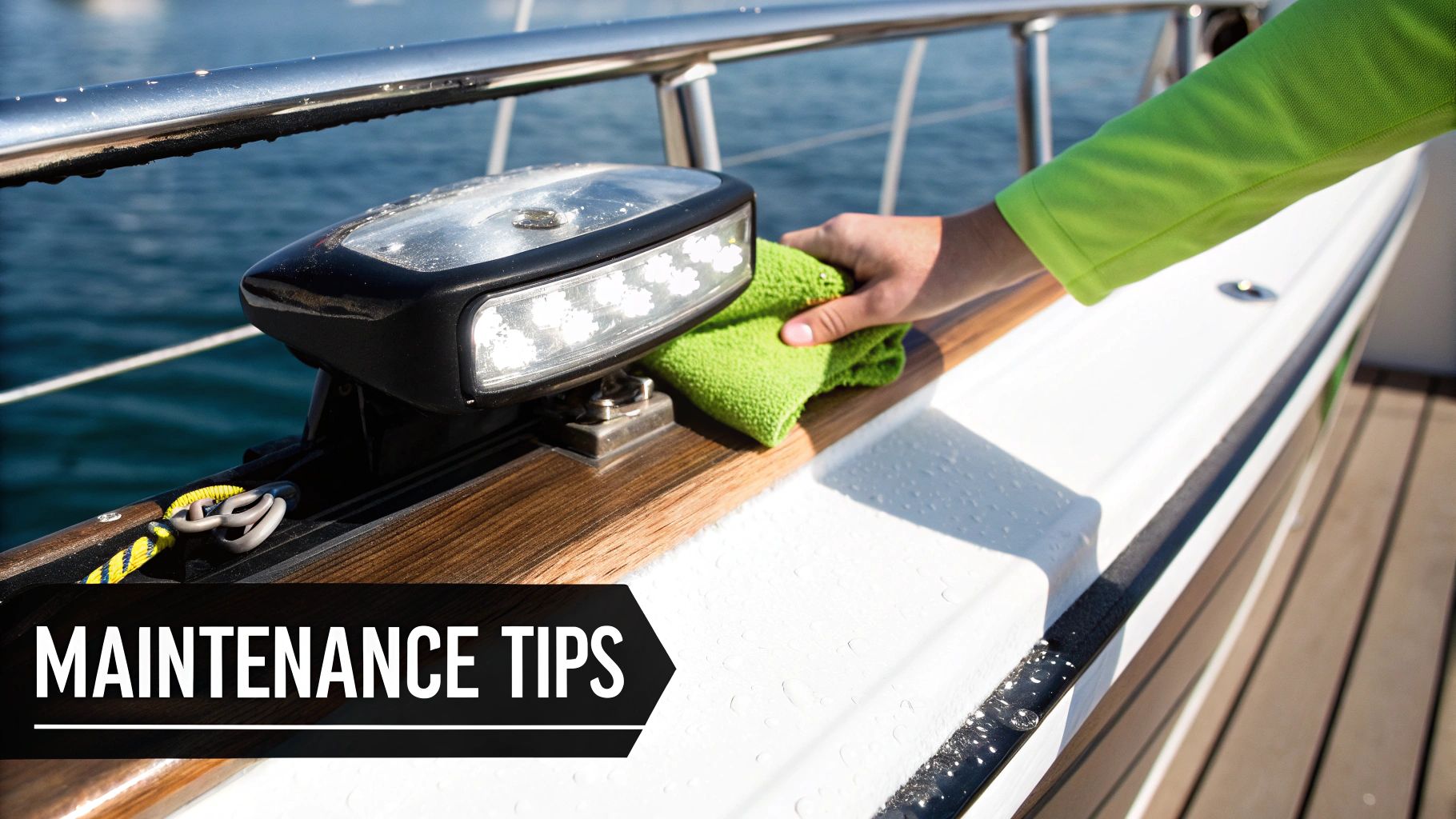
If you still use old incandescent bulbs, switching to modern LEDs is a great safety upgrade. LEDs are brighter, use a fraction of the power, and last for years. Less drain on your battery means more power for everything else.
The real advantage for boaters is their durability. Many LED fixtures are fully sealed, making them waterproof and resistant to salt spray. This robust construction means they're less likely to fail when you need them most.
Brighter, Safer, and Certified
Certified LED lights are often engineered to be much brighter than the minimum required by COLREGS. This gives you an extra margin of safety in poor visibility. Because LEDs produce color from the diode, the unit can be smaller and more robust.
The difference in lifespan is staggering. A quality LED light is often rated for over 50,000 hours, while an incandescent bulb might last only 1,000 to 2,000 hours.
This reliability means you can trust your lights trip after trip. It's also worth understanding the general advantages of LED lights that make them a superior technology.
Keeping Your Lights Working: A Simple Maintenance Routine
Your boat’s running lights are your first line of defense after dark. They are only useful if they turn on when you flip the switch. A simple, regular maintenance routine is essential for safety.
The first step is something you should do before every trip. Just hit the switch and do a quick walk-around. This simple check takes less than a minute and can prevent a dangerous situation.
Every so often, it pays to do a slightly deeper dive to keep everything in top shape.
Your Quick Maintenance Checklist
Here's what I recommend you check regularly:
- Clean Those Lenses: Salt spray and grime build up fast and can dim your lights. Wipe the lenses with a soft, clean cloth for full brightness.
- Check the Connections: Corrosion is the enemy of boat electronics. Look for fuzzy green or white buildup on wiring and clean it off.
- Pack a "Just-in-Case" Kit: Always have spare bulbs and fuses for your navigation lights stashed somewhere dry on board.
A few minutes spent on preventive care is your best insurance against a failed light in the dark. It’s a small price to pay for peace of mind.
That little kit of spares can be a trip-saver. A new bulb means you can continue your evening safely.
Clearing Up Common Questions About Boat Lights
Even seasoned boaters have questions about the finer points of using running lights. Let's tackle some of the most common ones.
When Do I Actually Need to Turn My Lights On?
This is a common question. The rules are straightforward: your lights must be on from sunset to sunrise. You also need them on during "restricted visibility" like heavy fog or a downpour.
What About My Kayak or Dinghy?
Small, human-powered boats like kayaks or canoes don't need fixed navigation lights. However, you must have a white light source, like a powerful flashlight, ready to show. This is key to preventing a collision.
Masthead vs. All-Round Lights: What’s the Difference?
This is a big point of confusion for many. It's all about the arc of visibility.
- A masthead light is a white light that shines forward in a 225-degree arc.
- An all-round light is also a white light, but it shines in a complete 360-degree circle.
Think of it this way: a masthead light says, "I'm a powerboat underway." An all-round light says, "I'm here, but I'm stationary."
Getting these details right is crucial. A masthead light shines forward over a 225° arc, while an all-round light is visible at 360°, often as an anchor light. You can find more essential safety gear tips in our comprehensive safe boating checklist.
